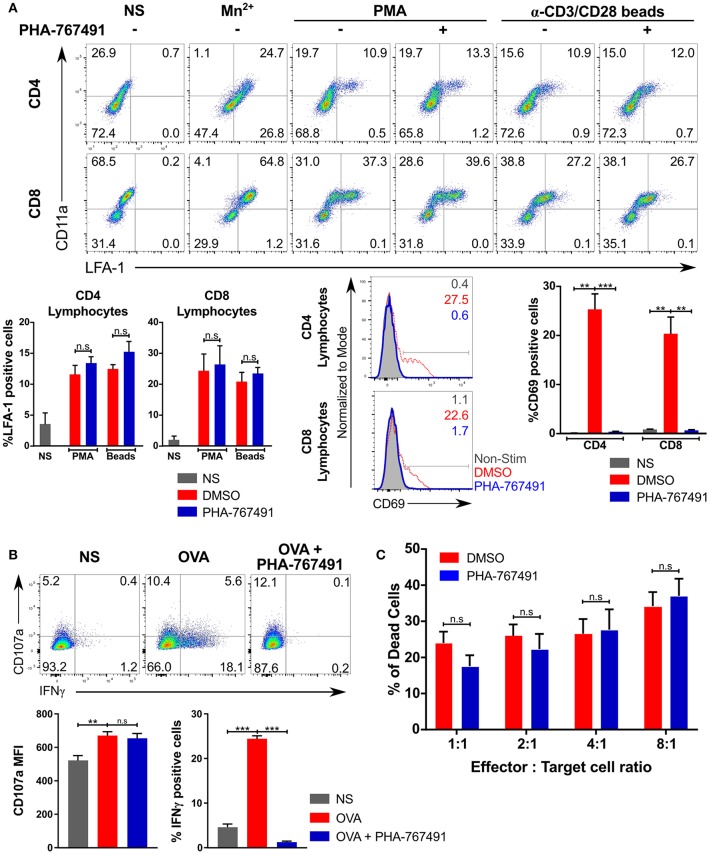Figure 5.
Effector functions not inhibited by PHA-767491. (A) PHA-767491 does not block LFA-1 conformational change. Human PBMCs were stimulated with PMA or anti-human CD3/CD28 beads for 0.5 and 3 h, respectively, and incubated with anti-LFA-1 antibody during the stimulation period. Mn2+ was used as a positive control for LFA-1 activation. The percentages of each quadrant in each graph are shown. PHA-767491 suppresses expression of CD69 in human T lymphocytes that were stimulated with anti-human CD3/CD28 beads for 3 h. (B) PHA-767491 does not impair degranulation in OT-I CTL. CTL were pre-treated with BFA for 30 min and stained with anti-CD107a antibody during the stimulation with APCs expressing single chain H-2Kb with OVA peptide for 6 h. The percentages of each quadrant in each graph are shown. (C) PHA-767491 does not dampen cytotoxicity of OT-I CTL. CTL that were serum-starved overnight were treated with either DMSO or PHA-767491 for 30 min before co-culturing with CTV-labeled and OVA-pulsed EL4 cells for 6 h. The bar charts compare the percentage of dead EL4 target cells, which were gated based on positive staining for the Live/Dead stain and negative staining for resazurin. Data shown is representative of at least three independent experiments. Bar charts are represented as mean ± SEM. Statistical significance was determined by unpaired two-sided Student's t-test (n.s, non-significant; **p < 0.01; ***p < 0.001).

